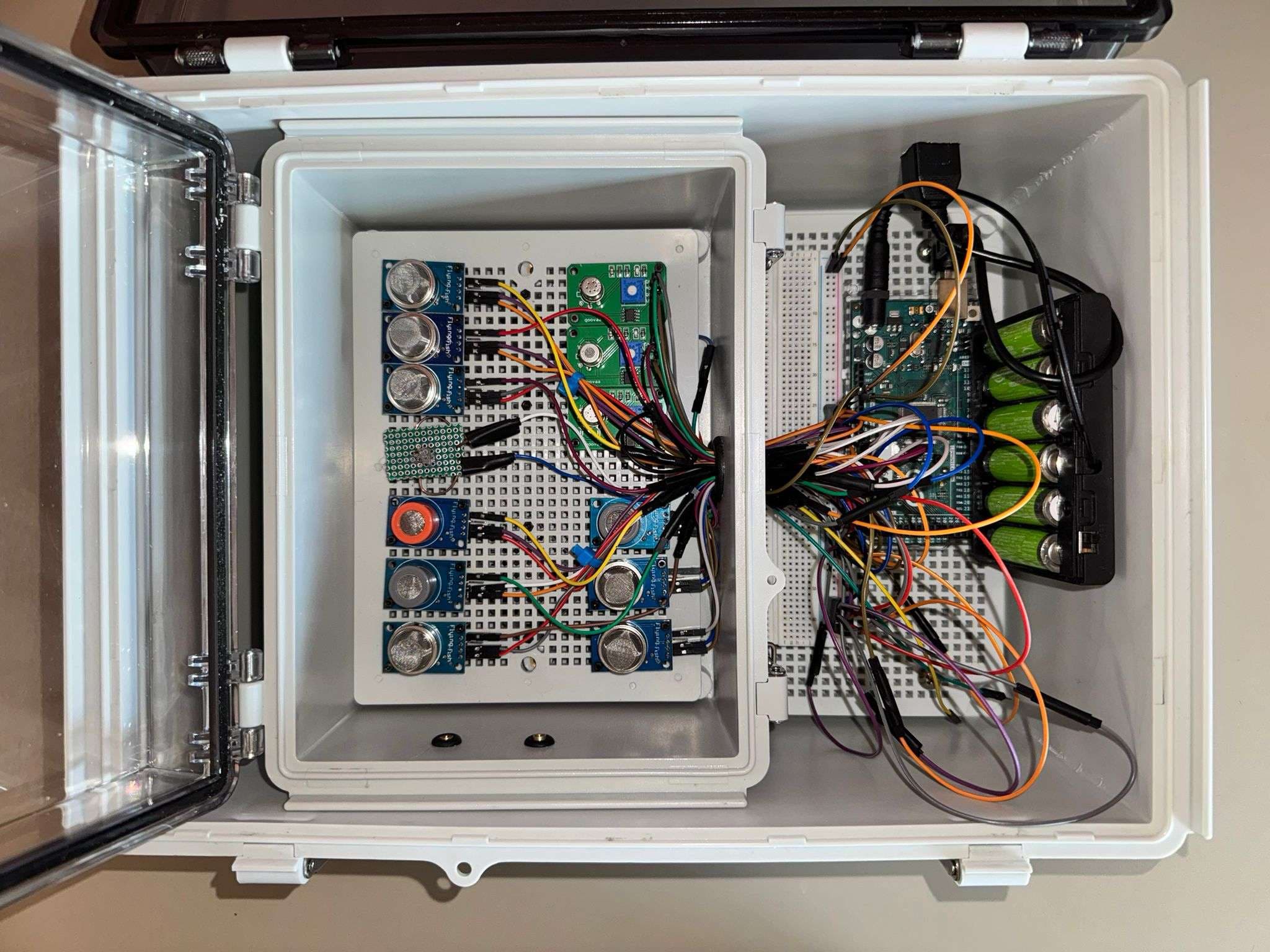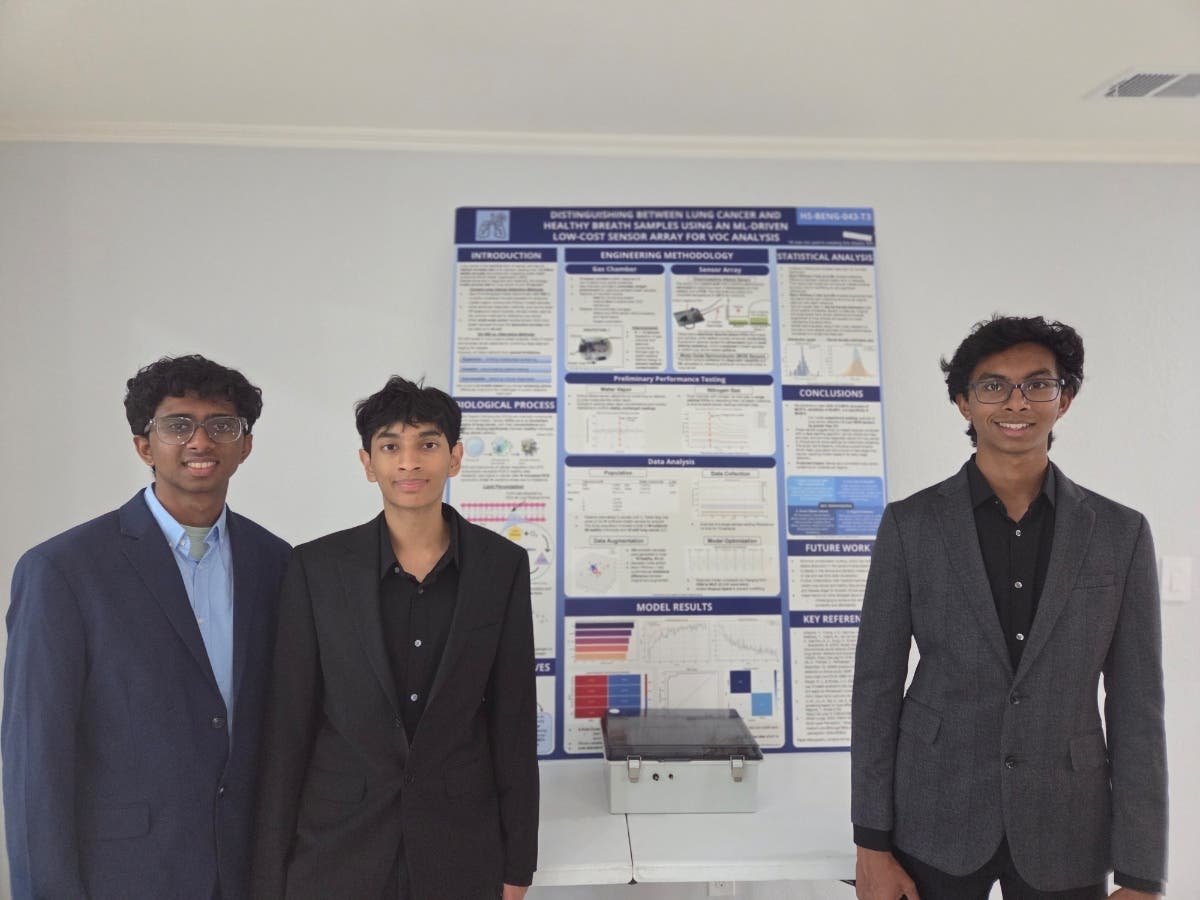FREMONT, CA — When Krish Kowkuntla’s grandfather was diagnosed with lung disease in 2023, the Fremont teen couldn’t stop thinking about how earlier detection could have prolonged his life.
After his grandfather’s death, Kowkuntla was motivated to help prevent others from experiencing the same fate. So he paired up with two classmates at Irvington High School in Fremont, Dhruv Iyer and Kavin Gobinath, and set out on a project that could potentially help save people’s lives.
The three high school seniors developed a $200 portable breath analyzer, which they say can detect lung diseases such as cancer in about five minutes — even in its early stages.
“When we started looking into research ideas, we were intrigued by how electronic noses could be applied in medicine,” Gobinath said. “Lung cancer detection is an emerging field, and we wanted to explore a practical, low-cost solution.”
Lung cancer is currently the leading cause of cancer deaths among both men and women, according to the American Lung Cancer Association.
Early detection is crucial in lowering mortality rates. Survival rates for people who are diagnosed with stage one lung cancer are above 70% while those with stage four have a survival rate of less than 10% at the five-year mark, according to a study published in the National Library of Medicine.
Through their invention, the teens hope to improve those survival rates.
The machine works by having a patient breathe into a Tedlar bag. The air in the bag is then transferred into a device using a gas sampling pump. The air stays in the device for about 30 seconds while sensors inside collect data. That data is then sent to the computer, where a learning model generates a result, Kowkuntla said.
 A top-down view of the machine created by Kavin Gobinath, Dhruv Iyer and Krish Kowkuntla. (Mike Morra)
A top-down view of the machine created by Kavin Gobinath, Dhruv Iyer and Krish Kowkuntla. (Mike Morra)
The device was tested on 46 patients at a cancer hospital in India, the teens said, and it was 96.3% accurate. The teens said they are now in the process of trying to get their study published in a scientific journal and seeking partnerships with manufacturers to create more breath analyzers.
“It’s exciting to see our work move closer to formal publication,” Gobinath said. “We plan to conduct a more formal clinical study to validate the device more rigorously.”
The boys, who each have a STEM background, met through research programs at their high school. Kowkuntla said they brought their own unique set of skills to produce the project.
Gobinath focused on research and biology, Kowkuntla on hardware and Dhruv on circuitry and AI, they said. Throughout the experience, they expanded into each other’s areas, and also learned new skills in coding and electronics that Kowkuntla said they wouldn’t have explored on their own.
“We encouraged each other through setbacks, problem-solved together, and celebrated each breakthrough,” Kowkuntla said. “It’s been as much about teamwork and personal growth as it has been about the project itself.”
 Kavin Gobinath works on a code that records the sensor reading from the breath analyzer. (Mike Morra)
Kavin Gobinath works on a code that records the sensor reading from the breath analyzer. (Mike Morra)
Some of those setbacks included trying to coordinate with hospitals to conduct clinical studies, handling patient protocols, and finding the correct products and hardware that would yield accurate results, the boys said.
They’re still working on improving the accuracy and reliability of their results, but they feel that the machine, which is affordable and portable, could one day make a big impact.
“We hope to partner with biotech companies or other organizations to help improve the prototype and bring it closer to real-world application,” Kowkuntla said.

